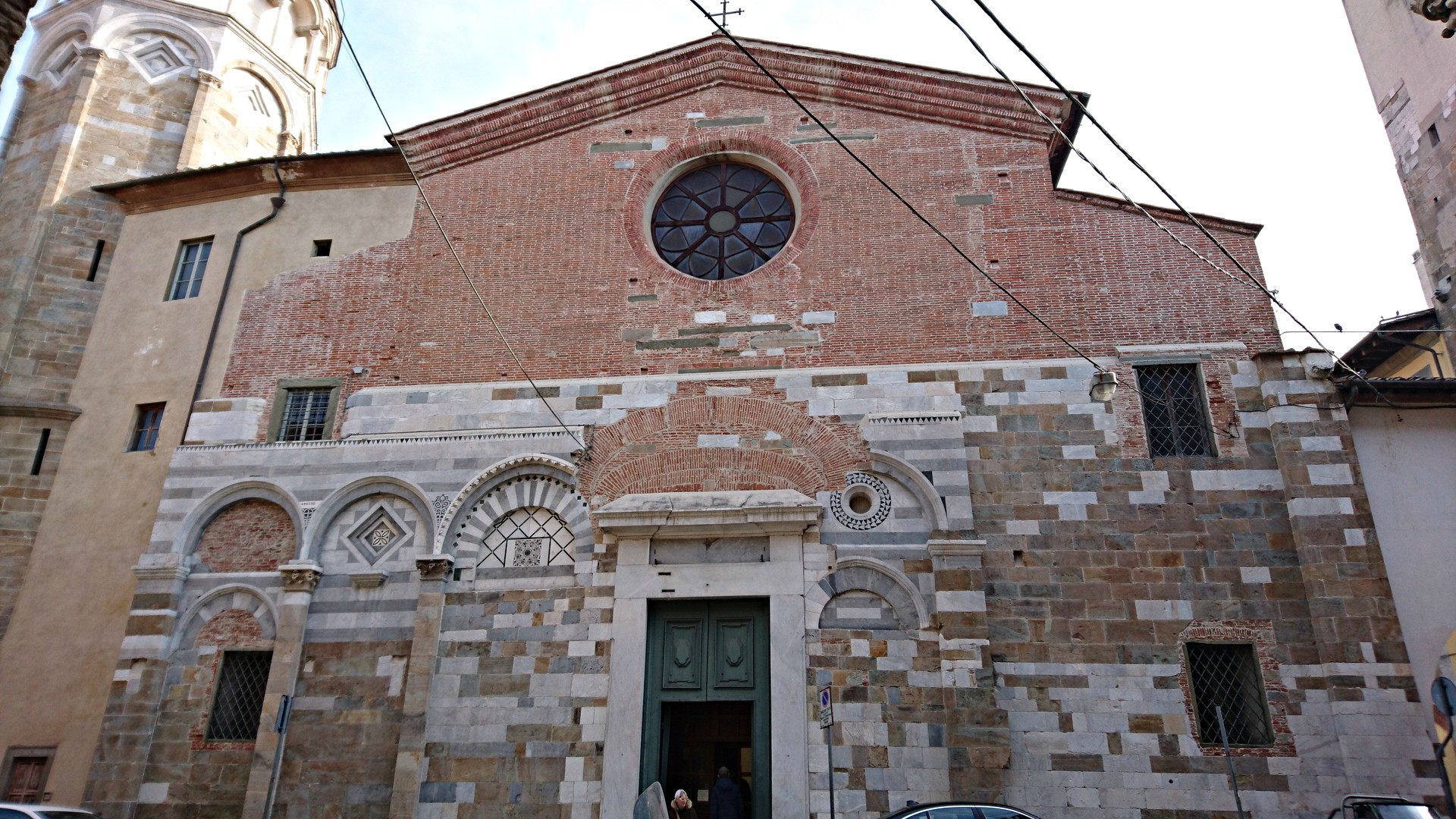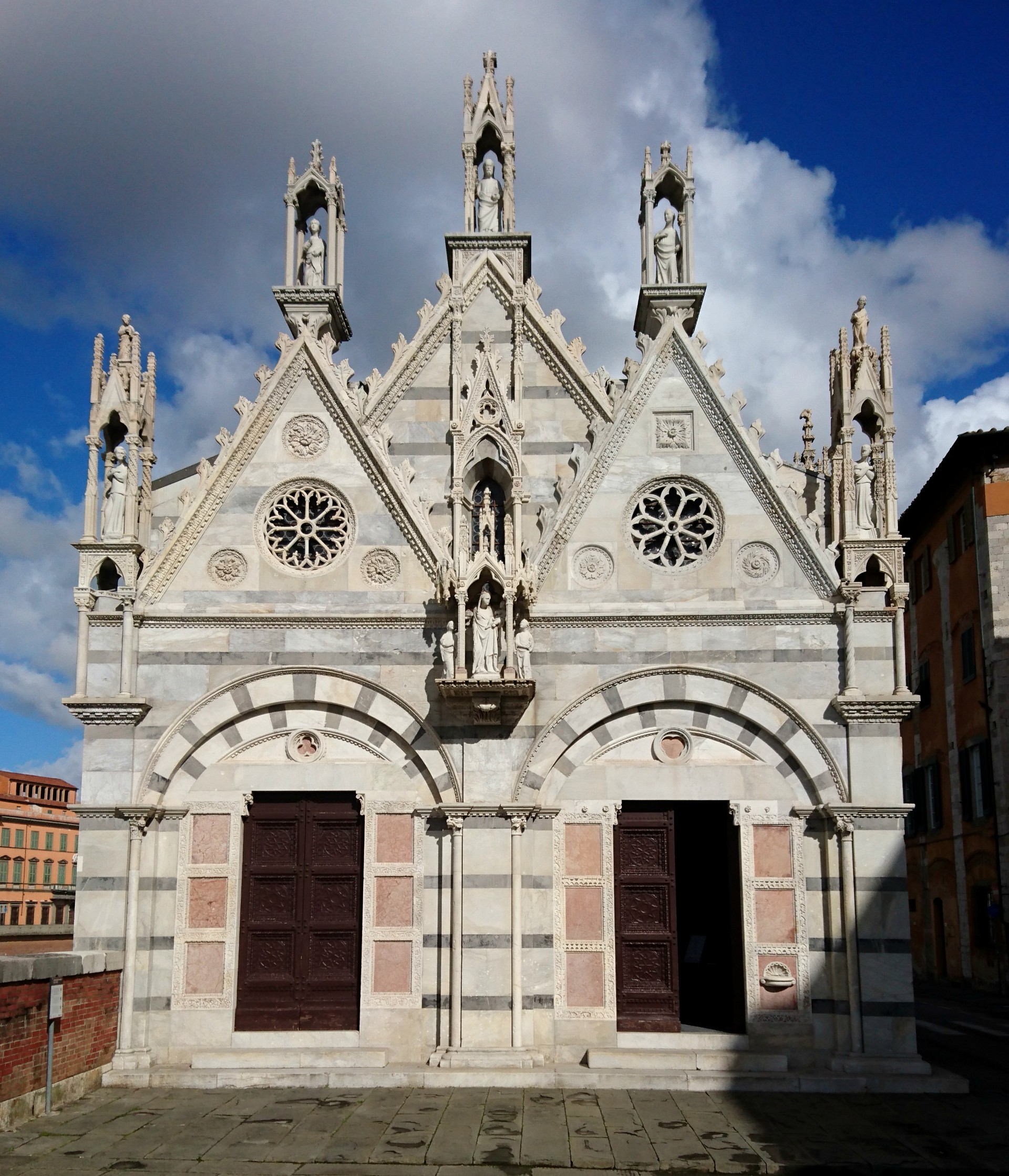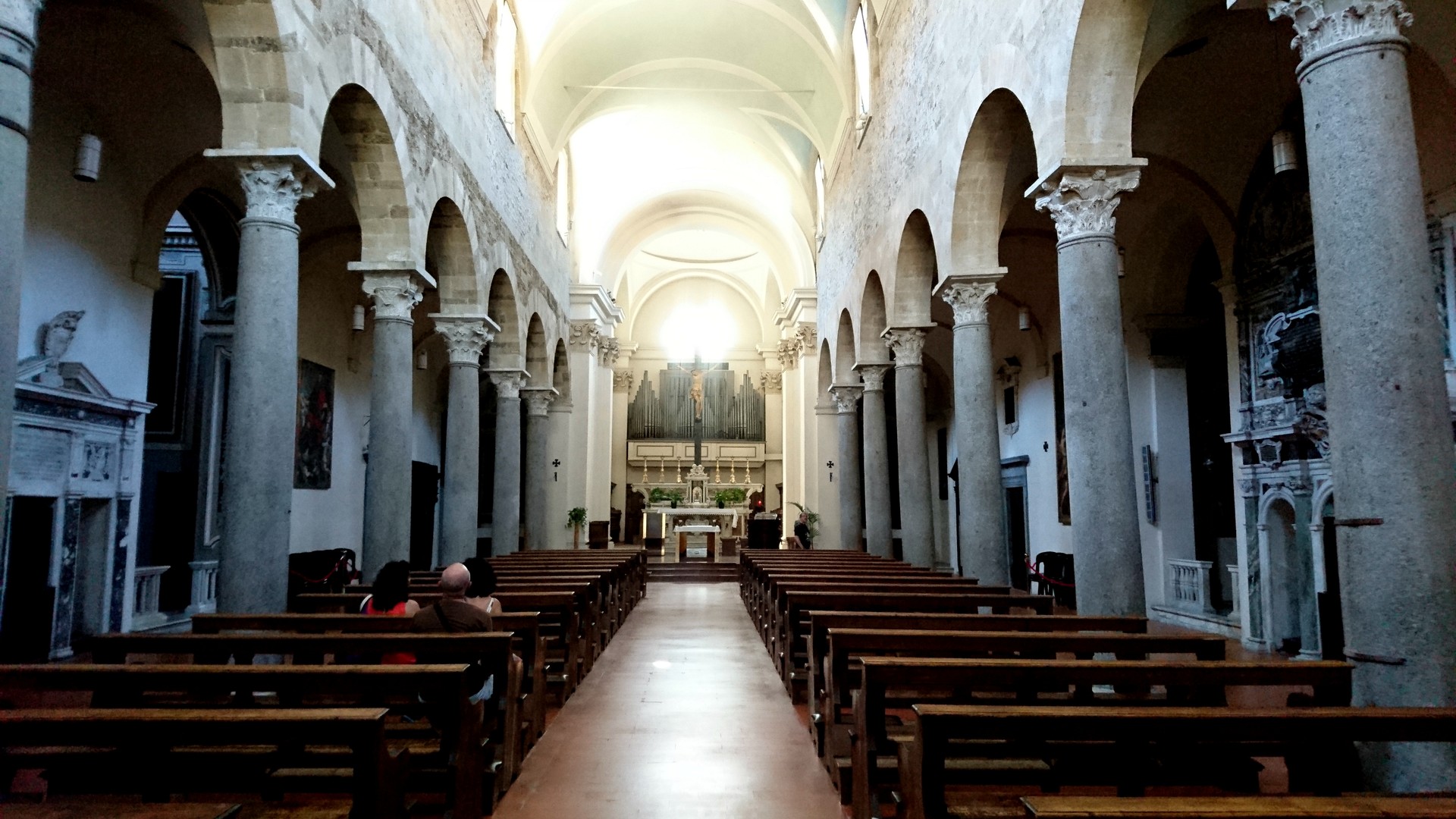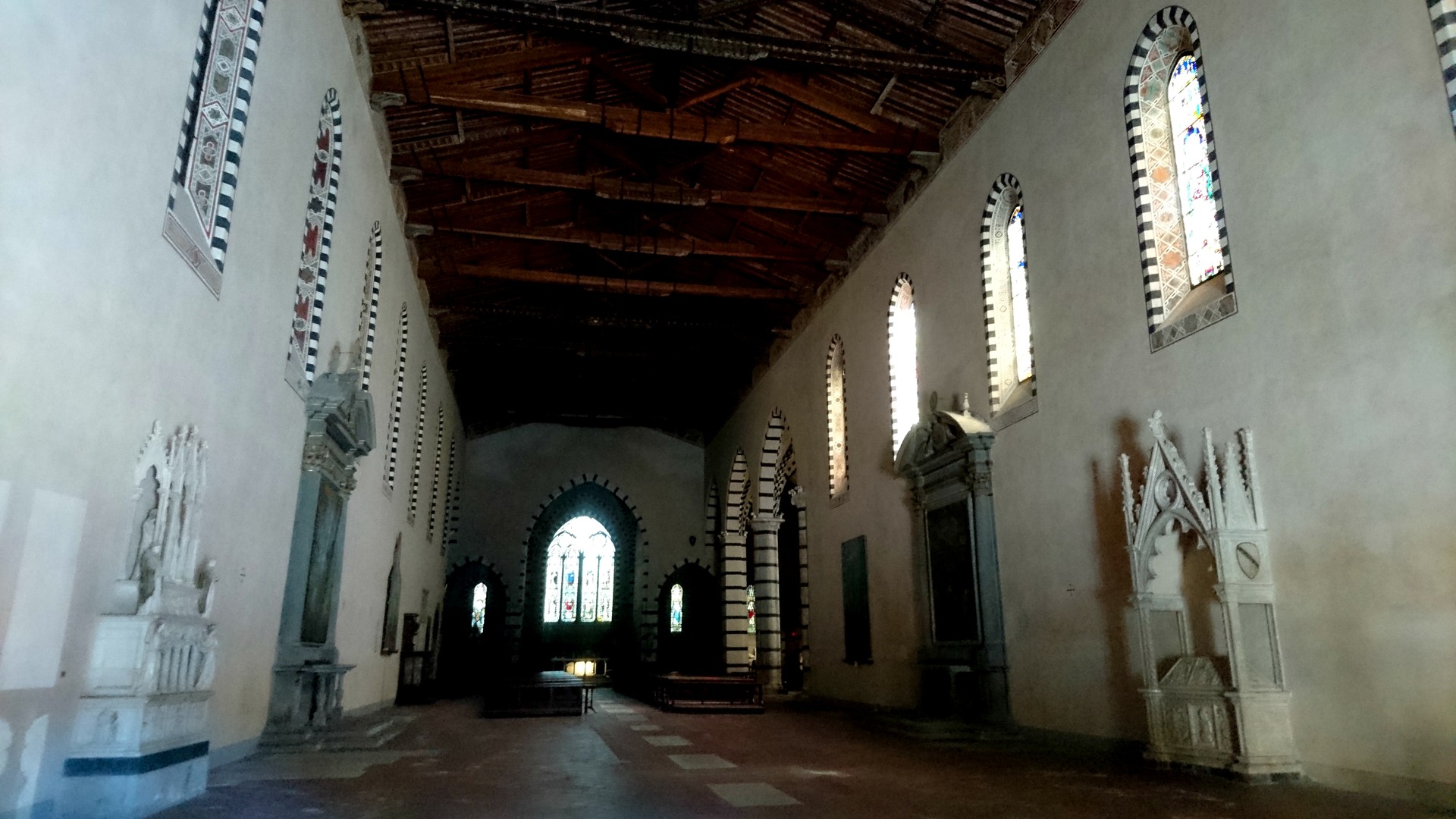Churches and their beauty
My interest in churches architecture, style, and visual art was born a long time ago, while I was wandering around with my mother in some city, admiring the beauty of the buildings.
Chiesa di Santa Cristina

The Church of S. Cristina has stood where it is today, south of the Arno, since the Lombard period.
Following XIX century renovation, the building now has a nave and gabled roof and all the walls are plastered, with the exception of the lower part of the X and XI century apse. This is made of mixed materials, in part from older buildings, with blind arches that frame lozenges and oculi.
Inside the church is a XIV century Madonna with Child, a painting by Passignano and a copy of a medieval crucifix.

Chiesa di San Nicola
The earliest mention of this church is in 1097.
The first order of the facade is in typical Romanesque style (blind arches, lozenges, and round windows). The octagonal bell tower dates from the XIII century.
After 1296 the building was occupied by Augustinian friars, with the addition of works attributed to Francesco Traini (painter), Giovanni Pisano (architect, painter, and sculptor). Inside, the painting of Saint Nicolas saving Pisa from the plague is early XV century and is one of the oldest depictions of the city.
The chapels and the vault were built after 1572.

Chiesa di San Martino
The church is attested for the first time in 1066. Initially governed by the canons of the Cathedral, it later became an Augustinian canonica.
The present building was rebuilt in the late Middle Ages when Count Boniface Novello Gherardesca turned it into a nunnery. The church has a single nave with a small transept. The facade is marble, the upper part of which was re-designed in the XVII century; the other walls are brick.

Chiesa di San Sepolcro
Known since 1138, the church is octagonal, similar to the Holy Sepulchre in Jerusalem. Words carved on the tower attribute its construction to Diotisalvi (architect of Pisa, XII century).
A porch was added in the XVI century and the church decorated with stucco in XVIII century.

Closed in 1848, it was rededicated in 1876 after renovation restored it to its original plan. The foliage and lion heads over the north door and the plinth and bust of a male date from the XII century.
Inside are a well and a bucket, reputedly used by S. Ubaldesca in the XII century to care for pilgrims in the nearby hospital. She was a Roman Catholic nun and a member of the Order of Saint John; also she was born in Pisa.
Chiesa Santa Maria della Spina
The church changed its name after the donation of the thorn from Christ's Crown - 1333.
The XIV century architecture and carvings were probably the work of Lupo di Francesco and his workshop. In the front is Madonna and Child, and above, statues from Andrea Pisano's workshop. The interior is a single nave with statues attributed to Andrea and Nino Pisano. (father and son - sculptors)
The tabernacle once held the thorn relic. The building was built nearer the river but was moved to a safer place, where it now stands, in 1871-75.


Chiesa di San Michele degli Scalzi


The church dates from 1025. Between 1152 and 1171 it was rebuilt with a monastery by the "barefoot" Pulsanesi Benedictines. The front is on two levels: the lower, in the Romanesque style, is of marble, while the upper, a XVII century addition, is brick.
The bell tower behind the apse is tilted due to subsidence in the past; the upper part is in brick and is decorated with medieval North African ceramic basins.

The monastery cloister is in the north.
Now, part of the SMS Center, in the late XIX century it was incorporated into the Richard Cinori pottery factory.
Chiesa di San Sisto in Cortevecchia
The church of Saint Sisto was built in 1087 in honor of the Saint, after the conquest on August 6 of the Al-Mahdia emporium in Tunisia.
The name Cortevecchia derives from the presence of the political centre in this part of the city in the early Middle Ages.
The profile of the tripartite facade is decorated with blind arches and imported Mediterranean ceramic basins. The doors and mullion windows are a recent addition but the left wall, decorated with ceramic basins and small blind arches, has kept its original appearance.
The bell tower base is in stone and the rest in brick.


Chiesa di San Frediano
The Church of Saint Frediano is mentioned for the first time in 1061. From 1076 to 1561, it and the adjoining hospital belonged to Camaldolese monks; later it passed to the Knights of Saint Stephen, then to the Barnabites, who added the noblemen's chapels.
The convent was suppressed in 1784. The front was restored in 1964 to recover its Romanesque style. Built on three levels, it incorporates Roman remains like the architrave over the portal. Columns with XI century capitals divide the interior; note the exceptional XII century cross painted on wood.



Chiesa di Santa Caterina
The church is known from the early XIII century, but structure now visible and the convent were built after a grant to the Dominicans (1222).
The facade, completed in the first half of the XIV century is decorated with marble in bi-colored bands and several orders of arches; busts of saints frame the rose window.


In the interior is a monument by Andrea and Nino Pisano to Archbishop Saltarelli and the Triumph of Saint Thomas, attributed to Lippo Memmi and Francesco Traini. A polyptych by Simone Martini originally on the high altar and a reredos by Traini in one of the chapels are in the National Museum of Saint Matthew.



Photo gallery
Content available in other languages
- Español: Las iglesias y su belleza
Want to have your own Erasmus blog?
If you are experiencing living abroad, you're an avid traveller or want to promote the city where you live... create your own blog and share your adventures!
I want to create my Erasmus blog! →



































Comments (0 comments)